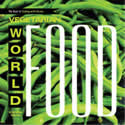From Madhava Smullen at ISKCON News
ISKCON Devotee Elected To Council of Eco-Village Network
→ The Yoga of Ecology
From Madhava Smullen at ISKCON News
Websites from the ISKCON Universe
Глава 4
Я сидел в своей комнате в здании храма столицы Македонии Скопье, принимал прасадам и слушал бхаджан, который пели преданные на нижнем этаже храма.
– Какой нектарный бхаджан, – сказал я преданному, – и идет уже несколько часов.
– Да, Махараджа, – ответил он. – Македоняне очень музыкальны. Мы любим петь и играть на музыкальных инструментах. У нас здесь даже есть свой тип тамбуры, с четырьмя струнами. Преданные часто используют ее в бхаджанах.
Спустя два часа мы с группой из двадцати человек выехали на площадь в центре города. Площадь, отреставрированная за последние годы, – популярное место отдыха жителей Скопье, которые собираются здесь теплыми летними вечерами, общаются и закусывают в расположенных поблизости ресторанчиках. Когда мы подъезжали к площади, я увидел огромную статую Александра Великого.
– Очень впечатляющая статуя, – сказал я преданному.
– Да, – откликнулся он. – Александр родился в Македонии и отсюда отправился завоевывать мир. Он выстроил огромную империю, но она оказалась слишком большой, чтоб с ней управляться, и он так и не смог вернуться домой.
Во время путешествий я читаю «Дневники Тамала Кришны Госвами», и как раз сегодня утром мне попался отрывок, в котором Госвами цитировал высказывание Шрилы Прабхупады о том же самом, так что я подтвердил:
– Так оно и есть, Шрила Прабхупада говорил, что Александр Македонский не смог поддерживать свою обширную империю. Вот его слова: «Представьте, если бы я покорил Бомбей, а потом Карачи, и тем временем упустил бы Бомбей. Это и случилось с Александром Великим… чрезмерная экспансия». Шрила Прабхупада говорил, что по этой причине он настаивает на важности распространения книг более, чем на открытии храмов. Он говорил: «Не делайте из меня Александра при жизни. Люди уже поняли, что я велик. Не преуменьшайте меня».
Преданный показал на другую сторону площади.
– Там еще одна достопримечательность, – сказал он, – дом матери Терезы. Она родилась здесь в 1910-м году и уехала семнадцатилетней в Индию как миссионерка. Сейчас этот дом – национальный памятник.
Мы подошли ближе, оказалось, что около здания собралась огромная толпа.
– Сегодня в Македонии отмечают годовщину ее отъезда, – сказал преданный.
– Может быть, посмотрим, пока идет бхаджан? – предложил я.
– Да, давайте войдем, – ответил он, и мы направились ко входу. – Открытый амфитеатр, в котором Вы сегодня будете давать лекцию, – часть этого мемориала. Программа рекламируется по всему городу, как «Вечер с Индрадьюмной Свами». Думаем, будет около ста пятидесяти человек.
– Приглашены ли какие-нибудь официальные лица, городские чиновники или другие важные персоны? – спросил я.
– Ну, насчет этого я не знаю, – сказал он. – В основном мы фокусируемся на своих друзьях и обычных людях. Но кто знает? Молва идет.
Мы зашли в мемориал, и я заметил несколько буклетов и брошюр о жизни матери Терезы. Я взял одну и стал читать стих, который она написала на борту, покидая Европу в 1928-м году. Читая, я был настолько тронут стихотворением, что даже решил присесть. Поистине, в нем был дух миссионерства, дух той самой жизни, которую избрал и я, приняв санньясу, отреченный образ жизни.
На прощанье
Я покидаю отчий дом
и все места родные
ради далеких берегов
тропической Бенгалии.
Я оставляю всех друзей,
отрекшись от семьи и дома,
чтоб моему Христу служить
так, как велит мне сердце.
Прощайте, матушка, –
да будет с вами всеми Бог.
Меня же Сила Свыше
в жаркую Индию призвала.
Неспешно рассекая океана
волны, плывет корабль.
Последний раз бросаю взгляд
на берега родной Европы.
На палубе стоит бесстрашно
счастливая, спокойная,
дитя довольное Христа,
Его невеста новобрачная.
В руке ее железный крестик
Спасителя распятого, –
душа ее готова принести
свою непростую жертву.
«О Господи, взгляни на эту жертву
как на признание в любви,
позволь созданью Твоему
прославить Твое Имя.
Взамен я у Тебя прошу,
о милосерднейший Отец:
позволь спасти хоть одну душу,
ту, что Тебе уже знакома».
Ясные, чистые, летней росы
ее тихие слезы текут, так
подтвердив благословеньем
ее непростую жертву.
[ Гонжа Бояджиу]
– Махараджа, – произнес преданный, возвращая меня к реальности, – нам надо идти. На площади начали бхаджан.
Мы поспешили к поющим преданным, – вокруг них уже собралась большая толпа. Это напомнило мне наши публичные киртаны в Польше в начале 90-х. Подойдя, я снова поразился красоте музыки и пения. Молча постоял несколько минут, слушая, а потом обратился к преданному около меня.
– Думаю, вы все в прошлых жизнях были гандхарвами, – сказал я. – Господь Чайтанья послал вас сюда, чтобы освободить этих людей.
И отправился к преданной, раздающей сладкий прасад из корзинки.
– Не позволите мне взять корзинку и пораздавать прасадам? – спросил я ее.
Я постепенно продвигался с корзинкой к другой стороне площади, удивляясь, что ни один человек не отказался от прасада. Звуки киртана на расстоянии становились все тише. Пожилые женщины судачили на скамейках, а их мужья за грубыми деревянными столами играли в карты. Несколько молодых пар прошли мимо, явно удивленные моим ярко-шафрановым одеянием, но все были вежливы и почтительны. Несколько раз после короткого разговора люди приглашали меня к себе домой отобедать. Одни пожилые супруги даже спросили, есть ли мне, где остановиться на ночь.
«Вот в таких местах мне нравится бывать, – думал я. – Вот где я счастлив больше всего: на улицах, распространяя сознание Кришны».
Я улыбнулся про себя, подумав, что даже выхлопы проезжающих машин вдохновляют, напоминая мне годы, что я провел, распространяя книги и проводя харинамы в городах по всему миру.
Спустя сорок пять минут за мной пришел преданный.
– Махараджа, – сказал он, – мы бы хотели, чтобы Вы провели бхаджан.
Когда мы вернулись к бхаджан-группе, я взял микрофон и произнес небольшую речь, одну из тех, что давал на улицах тысячи раз. «Я мог бы делать это вечно, – думал я, – по сути дела, это путь к бессмертию». И припомнил один из моих любимых стихов:
“На людных площадях славлю я Твою милость, что дарована даже ничтожным созданьям, и что позволила мне, низкорожденному, жить в лесу Враджа, где Твои великие преданные, исполненные чистой любви, стремятся родиться хотя бы лесной травинкой”.
[ Шрила Рупа Госвами, Уткалика-валлари, стих 65 ]
На следующее утро после исполненной блаженства программы, усиленной еще более красивыми бхаджанами, все начали готовиться к вечерней программе. Позже, когда мы ехали в город, я спросил у преданных, будет ли в амфитеатре охрана. Македония – это бывшая часть Югославии, а я помнил о тех случаях насилия, с которыми столкнулся несколькими годами ранее в Боснии и Хорватии.
– В этом нет нужды, – ответил преданный. – Обычно у нас нет проблем.
Мы приехали к восьми вечера, преданные только что начали бхаджан.
«Падшие ангелы, – думал я про себя, улыбаясь их мелодичному киртану, который наполнил и амфитеатр, и прилегающую площадь. – Не привлечься невозможно».
Вскоре весь театр под открытым небом заполнился гостями. Когда бхаджан закончился, перед аудиторией занял свое место я. Настраивая микрофон и переговариваясь с переводчиком, я вдруг заметил, что пятеро крупных хорошо одетых мужчин вошли в амфитеатр и заняли стратегические позиции.
Заметив у них мини-микрофоны и проводки, уходящие за уши, я подумал, что должно быть, это команда охраны. Посмотрев левее, к выходу с программы, я заметил человека пониже, скорее всего, начальника команды, стоящего с двумя охранниками по обе стороны от него.
«Видимо, какая-то опасность все-таки есть, – подумал я, – но преданные, наверное, решили меня не тревожить. Должно быть, наняли парней на тот случай, если все-таки что-нибудь произойдет».
Ум мой был спокоен, и я, зная, что с любыми беспорядками легко разберутся, взял Бхагавад-гиту и начал лекцию. Аудитория была внимательна и хорошо воспринимала все, что я говорил, так что я углубился в философию и даже объяснил, кто такой Кришна, что такое Его имя, слава, форма и игры.
Потом я особо отметил, что философия сознания Кришны применима и в наше время. Я процитировал Шрилу Прабхупаду, что у нас есть духовное решение материальных проблем. Люди кивали головами, соглашаясь с теми доводами, что я приводил, – особенно начальник охранной команды.
Через пролетевший незаметно час я закончил свое выступление. И смутился от шквала аплодисментов. «Я всего лишь исполняю свой долг санньяси», – сказал я переводчику.
Когда я поднялся, чтобы отправиться к столику с книгами, то заметил, что охранная команда быстро направляется к выходу.
«Почему они не остались до конца программы?» – удивился я.
Около стола с книгами было столпотворение, люди ожидали меня, чтобы подписать только что приобретенные книги. Взяв ручку, я присел, подписывая книги и оставляя по несколько вдохновляющих слов.
Внезапно ко мне подбежал запыхавшийся преданный.
– Махараджа! – выговорил он. – Правда, здорово? Просто невероятно! Даже не верится.
– А что случилось? – сказал я.
– Вы не видели? – сказал он. – Премьер-министр страны был на Вашей лекции. Пришел, как только Вы начали, и стоял у входа с двумя телохранителями по бокам. Он оставался до самого конца Вашей лекции.
– Охрану я видел, – сказал я. – Но не знал, что здесь премьер-министр. Вот уж действительно, это как глазурь на торте этого чудесного визита в Македонию.
– Есть еще и вишенка поверх глазури, – заметил преданный, широко улыбаясь.
– И что бы это могло быть? – сказал я.
– Премьер-министр сообщил через своего секретаря, что ему очень понравилась Ваша речь.
Я покачал головой. «Милость Господа Чайтаньи безгранична», – думал я.
Шрила Прабхупада пишет:
«Движение сознания Кришны распространяется по всему миру просто благодаря рассказам о Кришне. Мы издали множество книг, в том числе “Шри Чайтанья-чаритамриту” в семнадцати томах по четыреста страниц в каждом, а также “Бхагавад-гиту” и “Нектар преданности”. Мы также публикуем “Шримад-Бхагаватам” в шестидесяти томах. Где бы говорящий ни пересказывал то, что он узнал из этих книг, а аудитория слушала его, там будет хорошая, благоприятная ситуация. Поэтому члены нашего Движения, особенно санньяси, должны очень хорошо заботиться о проповеди сознания Кришны. Это создаст благоприятную атмосферу».
[ Шримад-Бхагаватам 8.1.32, комментарий ]

Dear Devotees and Friends,
We would like to invite you all for the Disappearance day celebrations of our founder Acharya His Divine Grace Abhay Caranaravinda Bhakti Vedanta Swami Prabhupada ( Srila Prabhupada )
Date: 17 November
Day: Saturday
The program is as follows
4.30 AM Mangala Arati led by Srila Prabhupada
7.00 AM Darshan arati and Gurupuja
7.30 AM Damodara Arati — offering lamp to Sri Damodara
7.45 AM Srimad Bhagavatam Class by Srila Prabhupada
10.30 AM Vaisnava Bhajans
11.00 AM Glorification of Srila Prabhupada ( Offering Homages )
12.00 Noon Bhoga Offering
12.30 PM Pushpanjali ( offering Flowers )
12.45 PM Gurupuja and Kirtan to Srila Prabhupada
1.30 PM Honoring the feast prasadam
Special Evening Program:
6.30 PM Bhajans
7.20 PM Special Arati to Srila Prabhupada ( The time of his departure from this world)
Please come and join in glorifying Srila Prabhupada ” Who built a home where the whole world can live”
If you like to sponsor the feast or the flowers and receive unlimited blessings from Srila Prabhpada please contact
Vrajanandana dasa — 0412 574 949
Shyama Saran dasa — 0439 969 002
Sita Rama Lakshmna dasa — 0422 045 525
Sita Rama Lakshman Dasa
Dear Vaisnavas and Vaisnavis
Please accept my humble obeisances. All glories to Srila Prabhupada.
This year we will be celebrating Govardhana Puja on Thursday 15th November from 5 PM at our temple at 159 Canning Road Kalamunda. This year the festival will be coordinated by Kesava Gopal (0433922454) and Anuttama Kesava Prabhus. The feast will be cooked by Rasa Vigraha and Radhapati Prabhus. If you are able to give some time to help prepare the feast please contact Akshaya Puri (0401414172).
Please prepare and bring some sweets to decorate the hill.
The program is as follows
5.00 Bhajans
6.00 Class on Govardhana Lila by His Holiness Ramai Swami
6.45 Arati to Giri-Govardhana and circumabulation of Govardhana Hill
7.00 Gaura Arati and Damadorastakam
7.30 Prasadam Feast
For more information and sponsorships please contact Vrajananadana (0412574949 ) or Sita Rama Lakshmana (0422045525)
On behalf of the festival committee
your servant
Yadu Srestha (0423696537)
Krishnanandini dasi recounts her early days in ISKCON and how she was fortunate to be initiatiated at the Dallas temple by Srila Prabhupada.
Dallas, TX
2012-09-12
Only seven shopping weeks to Christmas!






Cook sumptuous dishes like these? Yes we can!!




These are the books.

This is the 11-disc 20-hour Kurma TV cookery show DVD compendium.
Contact Kurma now: kurma.acbsp@pamho.net
Yes we can!!
Indus Valley 2,000 years older than thought
Nivedita Khandekar ,
Hindustan Times
New Delhi, November 04, 2012
The beginning of India’s history has been pushed back by more than 2,000 years, making it older than that
of Egypt and Babylon. Latest research has put the date of the origin of the Indus Valley Civilisation at 6,000 years before Christ, which contests the current theory that the settlements around the Indus began around 3750
BC.
Ever since the excavations at Harappa and Mohenjo-daro in the early 1920s, the civilisation was considered almost as old as those of Egypt and Mesopotamia.
The finding was announced at the “International Conference on Harappan Archaeology”, recently organised by the Archaeological Survey of India (ASI) in Chandigarh.
Based on their research, BR Mani, ASI joint director general, and KN Dikshit, former ASI joint director general, said in a presentation: “The preliminary results of the data from early sites of the Indo-Pak subcontinent suggest that the Indian civilisation emerged in the 8th millennium BC in the Ghaggar-Hakra and Baluchistan area.”
“On the basis of radio-metric dates from Bhirrana (Haryana), the cultural remains of the pre-early Harappan horizon go back to 7380 BC to 6201 BC.”
Excavations had been carried out at two sites in Pakistan and Bhirrana, Kunal, Rakhigarhi and Baror in India.
Morning lecture given on Radhastami by Giriraj Swami on Bhagavad Gita, Chapter 9, Text 13.
Dallas, TX
2012-09-22
TEXT 9.13
mahatmanas tu mam partha
daivim prakritim asritah
bhajanty ananya-manaso
jnatva bhutadim avyayam
TRANSLATION
O son of Pritha, those who are not deluded, the great souls, are under the protection of the divine nature. They are fully engaged in devotional service because they know Me as the Supreme Personality of Godhead, original and inexhaustible.
PURPORT
In this verse the description of the mahatma is clearly given. The first sign of the mahatma is that he is already situated in the divine nature. He is not under the control of material nature. And how is this effected? That is explained in the Seventh Chapter: one who surrenders unto the Supreme Personality of Godhead, Sri Krishna, at once becomes freed from the control of material nature. That is the qualification. One can become free from the control of material nature as soon as he surrenders his soul to the Supreme Personality of Godhead. That is the preliminary formula. Being marginal potency, as soon as the living entity is freed from the control of material nature, he is put under the guidance of the spiritual nature. The guidance of the spiritual nature is called daivi prakriti, divine nature. So when one is promoted in that way -- by surrendering to the Supreme Personality of Godhead -- one attains to the stage of great soul, mahatma.
The mahatma does not divert his attention to anything outside Krishna, because he knows perfectly well that Krishna is the original Supreme Person, the cause of all causes. There is no doubt about it. Such a mahatma, or great soul, develops through association with other mahatmas, pure devotees. Pure devotees are not even attracted by Krishna's other features, such as the four-armed Maha-Vishnu. They are simply attracted by the two-armed form of Krishna. They are not attracted to other features of Krishna, nor are they concerned with any form of a demigod or of a human being. They meditate only upon Krishna in Krishna consciousness. They are always engaged in the unswerving service of the Lord in Krishna consciousness.
Respond to this post now to take advantage of the great offer! Please note that this offer is only for those residing in Australia.

The set includes:
INDIAN ENTREES Includes scrambled Panir cheese; sweet and sour glazed carrots; North Indian red bean curry (Rajma); green beans sauteed in yogurt and poppy seed sauce, and many more recipes. Colour 111 min.
SOUPS, RICE, SAVOURIES & CHUTNEYS Includes whole green mung bean and tomato soup; creamy vegetable soup; rice pilaf with nuts and peas; deep fried cauliflower balls in tomato gravy (kofta); apple chutney; fresh tomato and cucumber Raita, and many more recipes. Colour 111 minutes.
BREADS, DRINKS & DESSERTS Includes basic unleavened whole wheat breads (chapatis); flaky pan-fried breads stuffed with green peas (parathas); sweet yogurt smoothie (Lassi); rose sherbet; classic semolina Halava; traditional vanilla sweet rice, and many more. Colour 109 minutes.
EAST MEETS WEST LUNCH, BUFFET & DINNER Includes tofu steaks; rainbow brown rice; potato and cottage cheese rolls with cranberries; baked, stuffed avocados... Colour 90 minutes.
ASIAN-STYLE LUNCH, BUFFET & DINNER Includes Indonesian vegetable stew; Thai vegetable curry; Malaysian hot noodles with tofu; vegetarian spring rolls & more. Colour 82 min.
MEDITERRANEAN LUNCH, BUFFET & FEAST Includes Italian fried corn bread (Polenta); Turkish nut pastries in syrup (Baklava); spinach filo triangles (Spanokopita); Moroccan couscous with vegetable sauce; stuffed vine leaves (Dolades); and many more mouthwatering recipes. Colour 90 min.
NORTH INDIAN LUNCH I, II & SOUTH INDIAN DINNER Includes cauliflower and potato supreme; peanut and coriander chutney; savoury wholemeal pancakes (Dosa), and many more recipes. Colour 90 min.
MEXICAN-STYLE BUFFET, MIDDLE EASTERN ENTREES, ITALIAN LUNCH I & II Includes vegetarian chili; baked, stuffed cheesy corn breads (Enchiladas); Israeli chickpea croquettes (Falafel); Lebanese bulgur wheat salad (Tabbouleh); eggplant Parmagiana; potato dumplings with tomato sauce (Gnocchi), and more. Colour 120 min.
SUMMER PATIO LUNCH I, II & III; THE COMPLETE GOURMET MEAL Includes ricotta cheese-filled pastries (Calzone); summer chilled fruit soup; sweet potato pie; baked cheesecake; savory samosas; fresh coriander chutney, and more. Colour 120 min.
INDIAN FEAST I, II & III Includes Bengali royal rice; yeasted, puffed fried bread (Khamiri Poori); date and tamarind sauce; curried chickpeas; tomato, peas and home made curd cheese (Matar Panir); and many more. Colour 90 minutes.
THE VEGETARIAN SMORGASBORD, PICNIC & CHILDREN'S PARTY; HOME-STYLE LUNCH Includes potato & pea croquettes; vegie nut burgers; asparagus & tomato quiche; North Indian potato salad; carob fudge cake; shepherd's pie; steamed cauliflower salad with eggless mayonnaise, and many more recipes. Colour 120 minutes.
(from http://www.amritaveda.com/learning/articles/ghee.asp)
"The milk of cows is considered to possess the essence or sap of all plants and Ghee is the essence of milk... When we consider Ghee we are in the company of superlatives. In India, Ghee has been so highly regarded for so many things, for so long, that one is slightly embarrassed to enter into this crowded river of praise.

This is what I have heard:
The ingestion of Ghee is like offering the finest of fuels into the fires of digestion (Agni). In accord with this, Ghee builds the aura, makes all the organs soft, builds up the internal juices of the body (Rasa) which are destroyed by aging and increases the most refined element of digestion (Shukra or Ojas) the underlying basis of all immunity and the "essence of all bodily tissues.
Maya Tiwari calls Ghee the single most ojas producing food on earth. Ghee is known to increase intelligence (Dhi) refine the intellect (Buddhi) and improve the memory (Smrti).
Although Ghee kindles or increases the digestive fire (Agni) on which all nutrition depends, it does so without aggravating Pitta - the elemental functioning of fire within the body. In fact, Ghee cools the body, essential in much of todays world in which everything is overheating.
Ghee causes secretions and liquification in the dhatus - bodily tissues - that dissolve wastes allowing the functional intelligences of the body (doshas) to carry away toxins (Ama) (also known as aam). The ingestion of Ghee is used in Panchakarma specifically to first penetrate into and then dissolve ama in the dhatus, allowing the wastes to be then carried to the intestinal tract and then expelled.
It is traditionally considered, that the older Ghee is, the better its healing qualities. 100-year-old Ghee is highly valued in India and fetches a very high price. Such Ghee was often kept in Temples in large vats and families often pass on aged Ghee to their next generation to be used as medicine.
 Qualities of Ghee
Qualities of Ghee
Ghee is known as a substance that gives longevity This is because it has opposite qualities (heavy, slow, oily, liquid, dense, soft), and thus pacifying effects, to the light, dry and rough qualities of Vata dosha. It is the increase of the qualities of Vata that are synonymous with aging. Ghee, in a very sure and steady way, slows the aging process by balancing the living one.
Ghee has the quality of snigda, oiliness, and unctuousness. It is smooth, lubricated and nurturing. Ghee is thought to make the voice soft and melodious.
Ghee is Guru, heavy. It increases the qualities of Kapha and decreases Pittaand Vata, which are both light.
Ghee has the quality of mrdu, softness. In Ayurvedic Panchakarma treatments, Ghee is the oil used on the eyes. In Netra Basti, a small dam is built around the eyes and filled with warm Ghee. Then, you open your eyes to its soothing softness. It seems after that treatment, that you see the world though a soft diaphanous curtain of love and loveliness.
 Healing Properties of Ghee
Healing Properties of Ghee
In ancient India, wells full of Ghee were especially for those who suffered wounds. When a surgeon cuts open a body, he only does so knowing that the body will be able to heal itself. The surgeon cannot do this. Ghee is known for the quality of Ropana - healing, and its effectiveness in facilitating recovery from wounds. In Ayurveda, when a person has a chronic peptic ulceror gastritis, Ghee is used to heal that ulcer inside the intestinal tract.
Ghee works wondrously on bedsores for the elderly or debilitated. It can be applied for broken bones and bruises. It is highly effective for all sorts of skin rashes. It is also used on burns of both fire and chemicals. Once, I accidentally got some sandalwood oil in my eye. It burned intensely and I was unable to wash it out with a variety of eyewashes. I spent hours in pain and finally I remembered to use Ghee. Almost immediately, the Ghee pacified the burning and the eye irritation ceased.
Just recently, a friend of mine who is a yoga instructor had a pressure cooker blow up in his face, giving him second and third degree burns. He immediately put some Ghee on his face and went to the emergency room. They told him that he would be scarred for life, that the burns would take several months to heal and that he should take steroids to help him (the body shuts down the production of testosterone after burns). He declined to take the steroids and continued to put on the Ghee, twice daily. After six days, he was completely healed without scarring.
Those with obesity should be very frugal in their use of Ghee and those with high ama should not take Ghee at all.
Ghee increases the overall strength, luster and beauty of the sarira - the body. Let us look at a variety of ways:
Used on the skin, Ghee softens and strengthens, protects and nourishes. Up until the last generation in India, there used to be men who gave Ghee massages on the street. It was always the preferred substance for the skin, but since it was more expensive than oil it has come to be used only for internal purposes. For generations, Indians have used Ghee for cooking and as an added measure on top of their food and as a medicine.
In India, medicinal ghee is passed on from one generation to the next. It was used for old and young, for new babies (Mothers in India will massage their children with Ghee) and for those in the last days of their life. I massaged my Fathers body with it before he died - He loved it. Sometimes, when he could not sleep, I rubbed it on his feet and temples and it soothed his agitation. It is considered it one of the best substances for self-massage (Abhyanga).
 Many Uses of Ghee
Many Uses of Ghee
For Body Massage-Abhyanga. Apply ghee all over the body, rubbing into head, chest, limbs, joints and orifices. This will bypass the digestive system and allow the qualities of Ghee to penetrate directly into the deeper tissues. It is said that 60% of what is placed on the skin is absorbed into the body. We literally eat what we put on our skin. Western science has discovered that massaging the skin creates endorphins or peptides, which enhance the bodys immune system. Peptides are thought to be the vehicle that the mind and body use to communicate with each other, a literal chemistry of emotion. According to the Charak Samhita, regular Abhyanga slows the aging process.
Ghee is used in Purvakarma (early Panchakarma) where a small amount of Ghee is taken first thing in the morning by the practitioner to oleate the internal organs and dissolve the ama or toxic wastes in the tissues, allowing them to be carried to the digestive tract for elimination.
Ghee is used as a carrier or yogavahi for herbs and bhasmas because of its supreme penetrating qualities and thus ability to carry these substances deep into the dhatus or tissues. One or two teaspoons first thing in the morning followed immediately with hot water will promptly produce a bowel movement. It will also warm the body quickly. Two spoonfuls of Ghee in warm (non-homogenized) milk before bedtime is soothing to the nerves and lubricates the intestines and facilitates a bowel movement in the morning.
Ghee is excellent for cooking and sautéing or stir-frying. Ghee has one of the highest flash points of all oils and is very difficult to burn. In India, it is said that food is incomplete without the use of Ghee.
Ghee is excellent for a gargle (gandush) to improve the health of the teeth and gums.
Ghee can be used as a bath oil. Take two tablespoons of Ghee and mix with several drops of an essential oil of your choice.
Ghee is excellent for scrapes and both chemical and heat or fire burns. Ghee can be used in the eyes for tiredness or fatigue.
Ghee is an exquisite facial moisturizer.
In India it is said that if a few drops of ghee are placed in the nostrils then nosebleed can be checked. If this is done twice in a day, then headache can be relieved.
 How Ghee is Made
How Ghee is Made
Ghee is the most refined end product of milk. (When you make Ghee, you are concentrating the quality of the milk you started with. This includes, antibiotics, hormones (rGBH), chemical pesticides, etc. For this reason, always use the best milk/butter you can find.) When you milk a cow, you get whole milk. If you let this milk sit for a while, cream rises to the top. If you skim off the cream and then churn it, after a while and all of a sudden, the fat globules will begin to stick to each other and form butter. What is left over is buttermilk.
In the west today, very little butter is churned the old fashioned way. Most modern dairies, even many organic ones, no longer churn their cream to make butter. In a typical dairy in America, the cream is now pushed (extruded) through a fine mesh screen in which the heavier and larger molecules of butter are held on one side of the screen while the smaller molecules of buttermilk pass on through.
I recently asked an Ayurvedic Teacher (Vaidya) about what difference this makes. He said that butter made without churning is lacking in a quality of fire (Agni). He even went further in his consideration of difference; the home-based Indian culture churns their cream with a hand churn, rolling it back and forth between their hands. This back and forth action, he said, imparts a particular balancing quality to the Ghee - instead of the one way churning of a gear driven churn.
As I have pointed out above, most of the butter made in the West today is not even churned. When we consider the process of butter and Ghee making at this level, we are in the realm of subtlety, but it is in exactly this realm (the subtle) that what is pure and purifying (sattvic) is found.
There is one very important difference in the way Ghee was and is made in India. The Indians start out with milk from a cow, just like in the West. But, they do not let the cream rise to the top and skim it off as we do in the West. Instead, and here comes the key difference - they culture the milk with yogurt, allowing it to sit for 4-5 hours, just before it becomes completely soured. Then they churn the whole milk. From that point on, the process is more or less the same.
This culturing with yogurt introduces another form of fire (agni) into the substance of refining the milk into butter and then Ghee.
As I have said, in my recent visit to modern day India, it was very hard to find high quality and pure cow Ghee. The commercial milk, cream and butter there are now homogenized and pasteurized or now ultra-pasteurized (This is a process whereby milk is heated to a higher temperature than pasteurization for a shorter period of time. This kills and destroys various living substances/enzymes in the milk thus prolonging shelf life. Ultra pasteurized milk can keep un-refrigerated for over a month). According to Ayurvedic Vaidyas I have consulted with, all of these factors increase the Vata (air and ether/destructive, catabolic, drying, rough) qualities in what was originally a very Kapha (earth and water, building, oily, tonifying, anabolic) substance - milk. Some of these processes, like homogenization, make the milk, and thus the cream and butter, indigestible. One of the things you can look for in milk and cream is the sticky quality (picchila), one of the gunas of Kapha. It will be lacking in processed milk products.
In the West, like India, there is a similar theme to the story. Although organic dairies are appearing all over the country, many of them make their butter by extrusion. Furthermore, they homogenize and ultra-pasteurize their milk (This is certainly not true of all milks available, but, like in Vrndavan, India, the tides of ignorance are increasing and the quality of milk and nutrition is decreasing,
Now, back to making Ghee. Once you have obtained your butter, you heat it in a stainless steel or enamel pot, bringing it to a boil. I believe that it is best to make your Ghee in stainless steel heavy pots, rather than aluminum because of the toxicity. It is best even to avoid thin stainless steel. This is because a heavier pot will distribute the heat of the fire more evenly, surrounding the Ghee.
Always try to use real fire rather than an electric range (This is again in the realm of subtlety and sattva that I referred to earlier). There is a quality of Agni that lends itself and pervades a substance cooked on flame that is not there when cooked on electricity. Because I could not understand the difference between the "heat of a fire and the heat of an electric range, I asked several Vaidyas about this in India. They all simply said that fire was a superior (more sattvic) way to cook food. While I personally still cannot explain that to anyone, that is the way I do it.
It is very clear to me that it is most important to create and enjoy a beautiful and positive environment when you are making Ghee. This subtle recommendation is perfectly in line with cooking Ghee on an open fire - it makes a difference.
Once the Ghee begins to boil, turn it down to the lowest flame at which it will continue to boil. As it boils, moisture evaporates off it and it will begin to clarify - the butter will turn from cloudy yellowish liquid to a more golden color. Whitish cloudy milk solids will rise to the top and sink to the bottom. Do not stir it. After an hour and half to several hours, depending on the amount and the size of the pot and the amount of Ghee compared to the flame, your Ghee will be ready.
The moment Ghee is ready is very critical. If you cook the Ghee too little, you will be left with moisture in the Ghee and it will lack the exquisite taste and qualities that it can develop, also, it will tend to spoil or sour. If you cook it too much, it will burn and impart a certain nutty flavor to the Ghee. This does not ruin the Ghee at all, but it is to be noticed, so that over time you can capture the perfect Ghee to be experienced between these two extremes.
After the Ghee is done, you skim off the top light crust of whitish milk solids. These and the heavier ones at the bottom of the pot are traditionally used to make sweets. Children in India love them and always plead with their Mothers to have the leftovers when Ghee is made.
Then, you pour the golden, sweet-smelling liquid through layered cheesecloth - to catch any last impurities into a bottle, leaving the slightly burned milk solids (caramelized lactose) on the bottom of the pot you cooked it in (Ghee has no lactose or milk sugars in it). Be sure to not close the glass jar into which you pour the hot Ghee until it comes to room temperature. The reason for this is that there should not be any moisture from condensation that may form on the inside of the jar. It is moisture that spoils Ghee, allowing a mold to grow and causing it to go bad. This is the reason that you always use a clean and dry spoon to take your Ghee out of its container. It is also a reason not to refrigerate your Ghee. One, because it is not necessary and two, it causes condensation to form inside the jar as you take it in and out of the refrigerator.
 Time and Season
Time and Season
It is best to make Ghee on the waxing fortnights of the moon as the moon represents the Mother and nurturing and all the best qualities of milk and butter are energized at this time. Regarding time and season, the quality of Ghee will change as the time of year and the diet of the cows change. Not all milk cows in the West are given green pastures to graze on. Even those, which are allowed to graze in the fields, often do not do so all year round. In winter, there are many days that the cows are not able to go out in the pastures and there is more hay and silage in their diet. This will change the quality of the milk, butter and Ghee. I have noticed that the more the cows graze in the fields on grass, the more yellow is the Ghee. This yellow is the result of more chlorophyll in the butter.
The making of Ghee is a very beautiful and peaceful experience. The sound of softly boiling butter, the pouring of the thick golden liquid into bottles ... this wonderful smell permeates the space.
 Cows and Buffalos
Cows and Buffalos
In India, Ghee is made from both Cow and Buffalo milk. If we consider the qualities of both of these animals, we can see why the Ghee of Cows is to be preferred. If we look at the bodies of a Buffalo and a cow, the buffalo is more heavily muscled; it is a denser animal in its makeup. Cows have a more moderate make-up of fat. The Ghee of a Cow is in liquid form at body temperature. The Ghee of a Buffalo is still slightly solid. Buffalo will eat almost any food, even spoiled food, while Cows in their natural environment, will turn away from such fare. Buffalos are often quite dirty and smell more strongly than Cows. Cows tend to be clean and like little dirt on their bodies. Cows smell quite good as I have experienced, when I stopped to pet and smell them on the streets of India where they roam about, ubiquitously, slowly and peacefully. Finally there is the striking difference in temperament between a Cow and Buffalo. Cows are far gentler in nature. Buffalos are comparatively more stubborn and aggressive. Because of these qualities and more, Buffalo milk and Ghee are considered more dulling (tamasic) while Cow milk and Ghee are considered more pure and purifying (sattvic).
When I asked my Indian acquaintances why there is a growing use of Buffalo milk and ghee over Cow milk and Ghee, they all said, It is because the Buffalo give more milk. Furthermore, the Indian peasants seek the nourishment of Buffalo Ghee, which has a far higher fat content than cow Ghee.
Even in Vrndavan, the home of Sri Krishna, where he himself was a cowherd, protector of the cows (Govinda) and the divine lover of the Gopis, cowherdesses, I was usually unable to find anything but Buffalo Ghee in the marketplace. You can tell the difference because Buffalo Ghee is white and Cow ghee is yellow.
Cow Ghee is used in lamps in temples and pujas all over India. It is said that the light of a Ghee lamp is more beautiful and brilliant than any other light. The light of burning Ghee is said to ward off negativity and evil influence.
Ghee is nourishing and healing. Ghee is steady and dependable and always supportive of life and living. Ghee brings an excess of goodness wherever and whenever it is appreciated and used. I am thankful for a substance that of all the foods I know is most like a Mother."
(from http://www.amritaveda.com/learning/articles/ghee.asp)